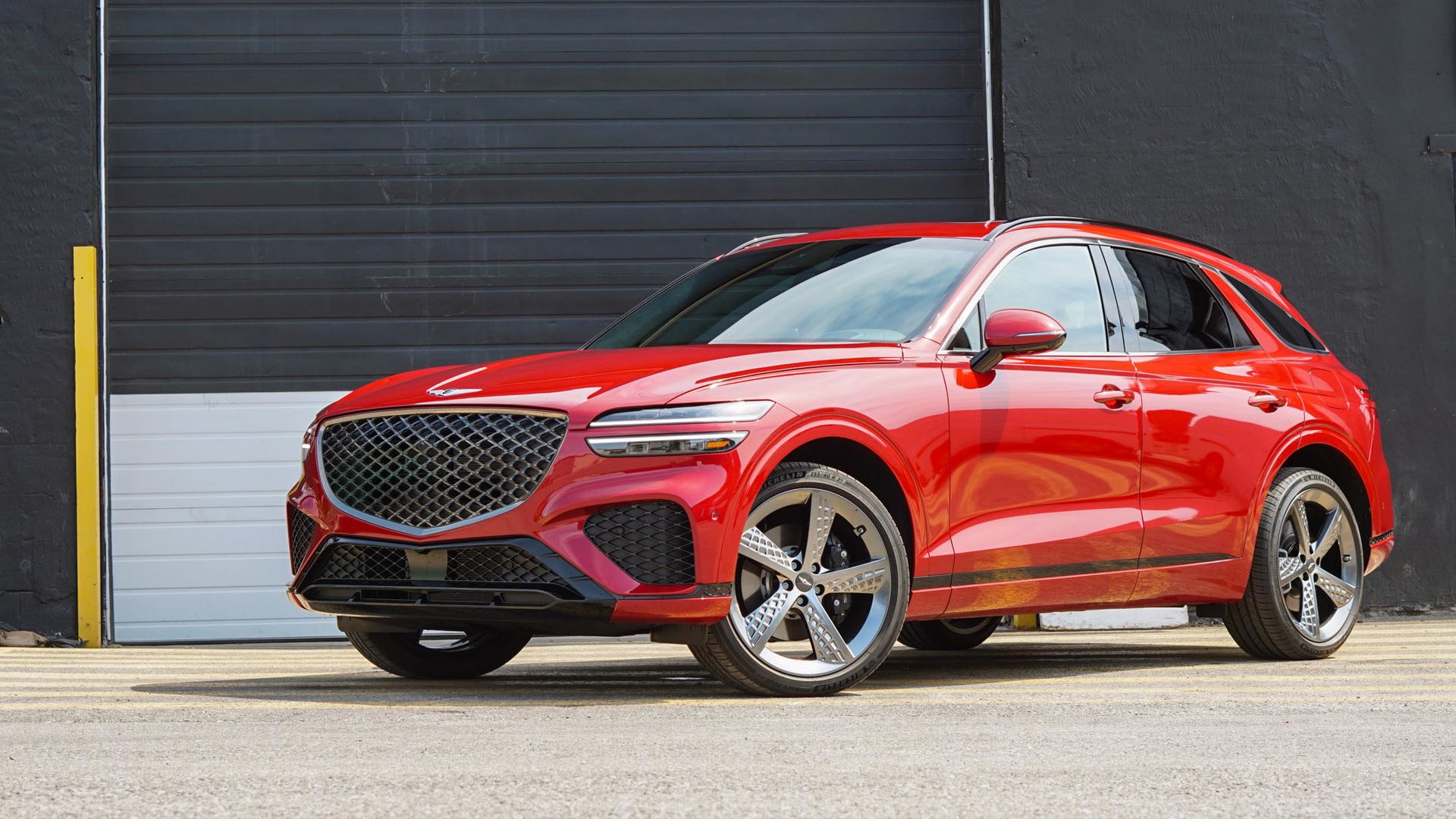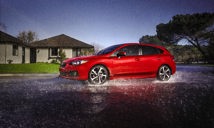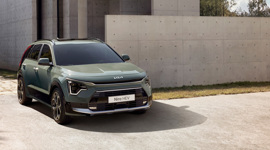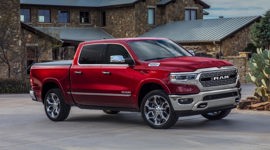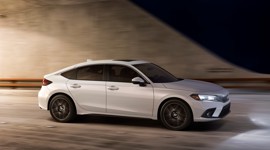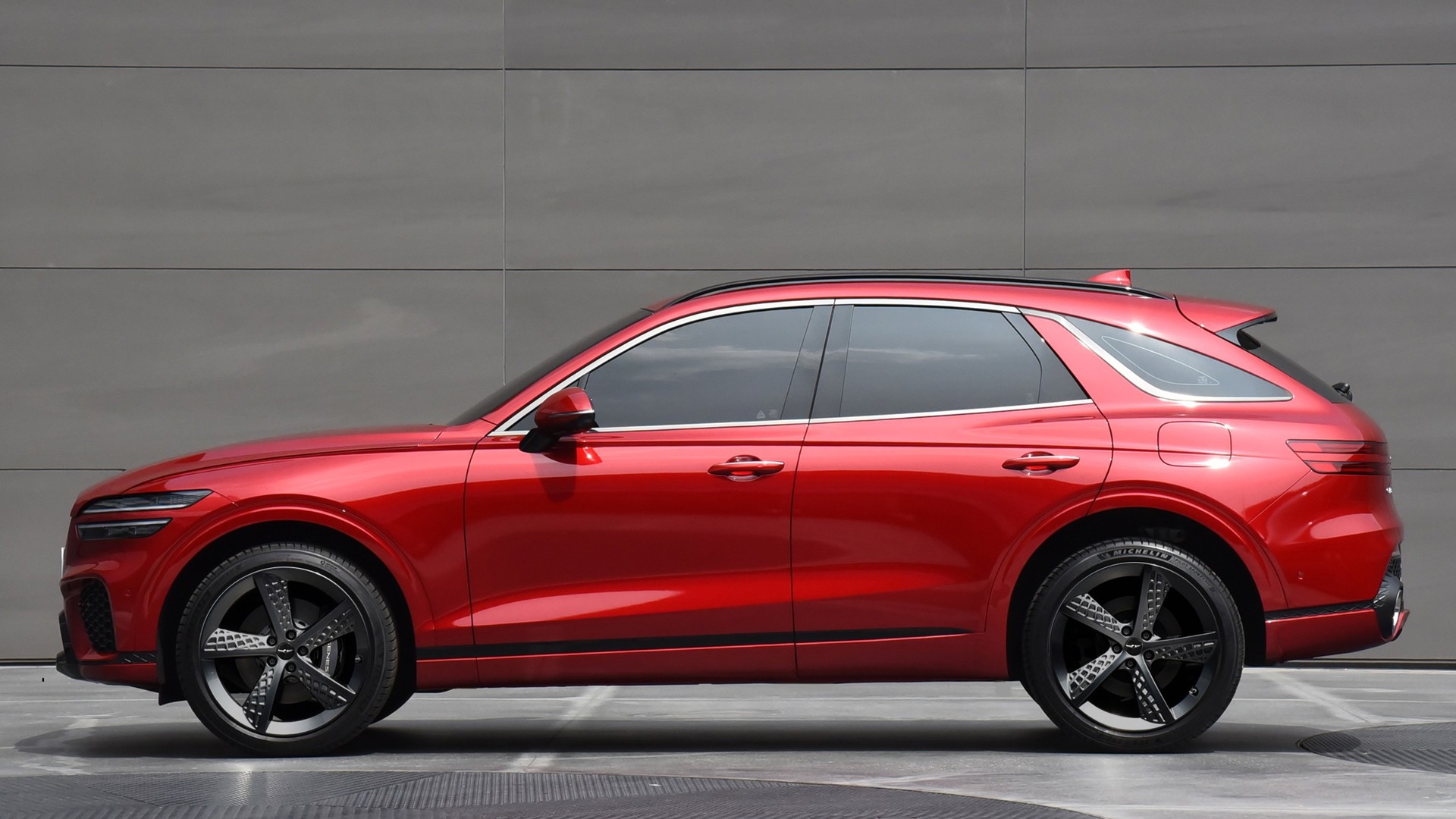Canada’s SUV and crossover marketplace continues to swell in size as automakers add new models – large and small – to appeal to a wider range of buyers’ needs and budgets.
We know that sorting through all the options for the best SUV or crossover to buy can be overwhelming, but our team of automotive experts are here to help. As part of our AutoTrader Awards, they have considered every single model available and voted on the best ones, narrowing down the field to give you a better jumping off point.
While the goal of the AutoTrader Awards was to name the best SUV/crossover model in each category, the longer list of the following finalists shows the depth of today’s utility vehicle marketplace. Here’s an overview of those 33 vehicles, which got the highest scores when AutoTrader’s jury of more than 20 Canadian auto industry experts were voting on the best ones. These SUVs and crossovers represent their favourite picks and “best buys” in each segment, vehicles they feel confident recommending to SUV shoppers.
Best Subcompact SUVs
Mazda CX-30
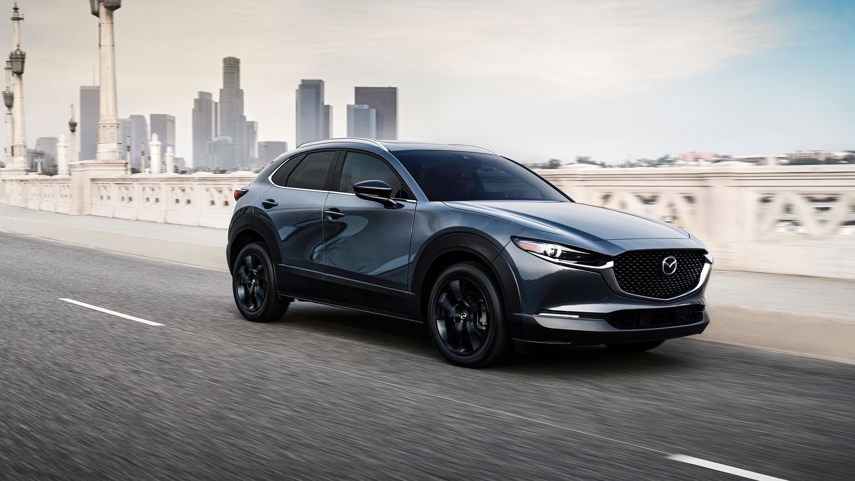
For nearly 20 years now, the Mazda brand has been a perennial favourite among Canadian drivers for its combination of fun driving feel, class-above fit and finish, and good value. But the Mazda CX-30 is also an excellent example of Mazda’s more recent tendency to offer top-level trims that challenge the luxury appointments available from upscale brands.
This year’s Best Subcompact SUV, the 2022 Mazda CX-30, starts out in a $26,100 GX trim, but the $38,000, 250-hp GT Turbo model offers performance and features to match some subcompact luxury crossovers at a more accessible price. The CX-30’s interior is cozy, rather than spacious, and its 2.0L and 2.5L non-turbo engines (155 hp and 186 hp) offer more modest performance at the car’s lower price points, but its driving feel and build quality remain hard to beat.
Subaru Crosstrek
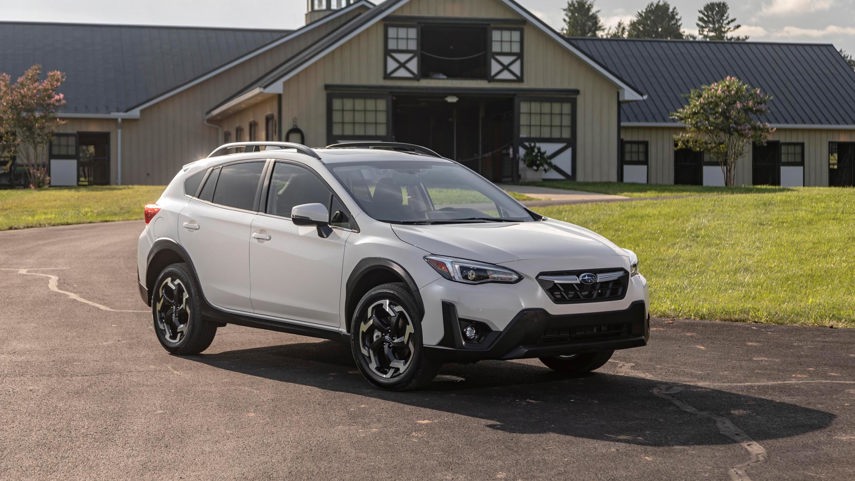
The Subaru Crosstrek has gotten better with time, largely thanks to the work of designers who have smoothed out this subcompact crossover’s edges since its debut a decade ago. Though closely related to the Impreza compact car, the Crosstrek gets more ground clearance and benefits from structural enhancements that let owners make use of its taller ride in light off-roading.
Subaru has made no changes to the Crosstrek since we named it a finalist in last year’s AutoTrader Awards, but why fix what isn’t broken? The lineup’s highlight is a rugged, well-equipped Outdoor trim that comes with a 182-hp 2.5L engine, a nice upgrade from the base model’s efficient but unexciting 152-hp 2.0L unit. Not for nothing, the 2.0L Crosstrek is one of the few small crossovers you can get with a manual transmission, if you still like shifting for yourself.
Kia Seltos
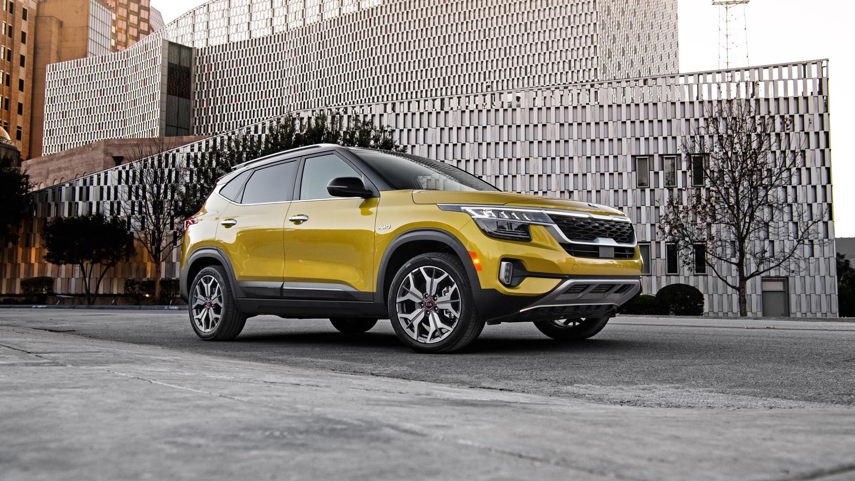
Kia introduced the Seltos last year, and it made a strong enough impression for us to name it the Best Subcompact SUV in the 2021 edition of the AutoTrader Awards. Although it didn’t win this year, it’s still considered one of the best vehicles in its segment for being so well-rounded.
Even in its entry-grade, 146-hp LX trim, which gets some useful driver assists and a nicely dialled-in powertrain at a sub-$24,000 price. And the top SX Turbo trim is a fun piece of work with a perky 175-hp engine and dual-clutch transmission for a bit more than $33,000 – a price that includes a head-up display, adaptive cruise control, and a highway driving assist system.
Hyundai Kona
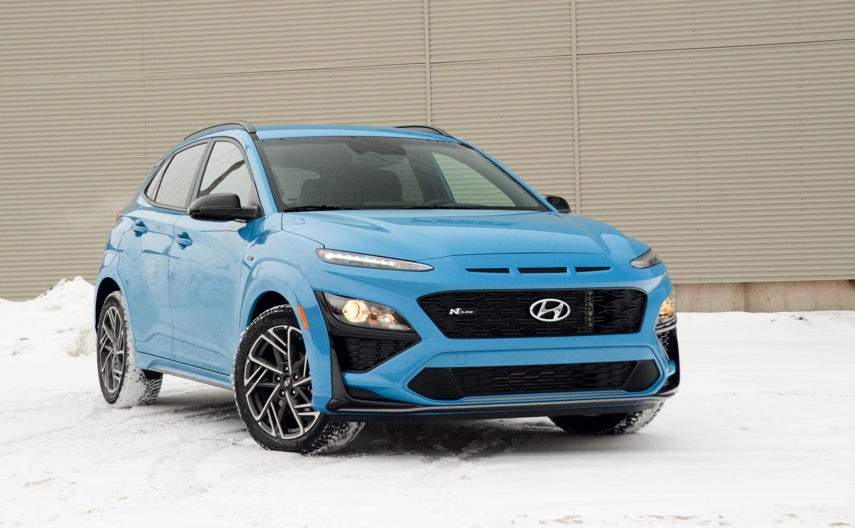
When the Hyundai Kona came around in 2018, it was obvious there was an appetite for an affordable subcompact crossover with off-the-wall styling, as the Korean company could barely build enough of them to keep up with demand. This year, Hyundai smoothed out the Kona’s styling, but also added some edge with a speedy N trim boasting a 276-hp 2.0L turbo engine and a chassis tuned at Germany’s Nurburgring racetrack.
But the Kona’s entry-level 146-hp engine does just fine in daily driving with its CVT, and you can get a taste of speed in N Line trims powered by a 195-hp 1.6L turbo engine and a dual-clutch transmission.
The Kona is a typically strong Korean value, with a base price around $22,000. N Line versions start at less than $30,000, while the track-ready Kona N is $42,000. Note that if you find the Kona a little snug inside, the mechanically similar Seltos’s cabin is roomier, thanks to a longer wheelbase.
Volkswagen Taos
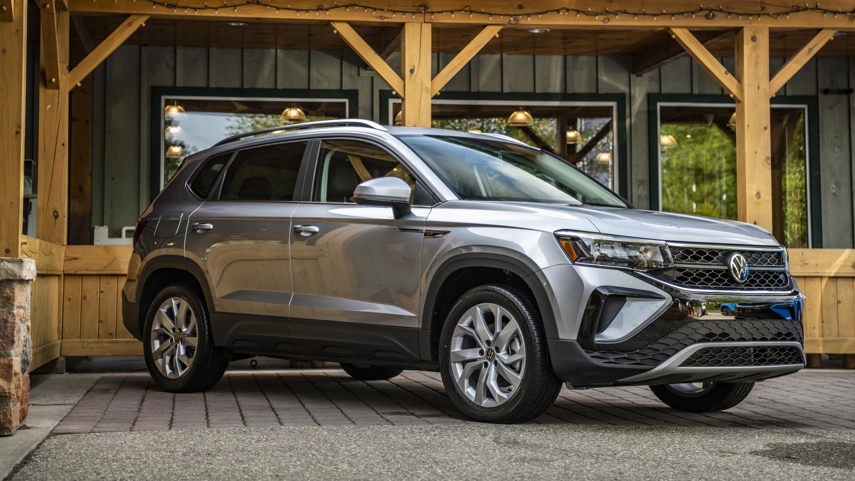
The Volkswagen Taos is the only newcomer among AutoTrader’s subcompact SUV finalists, a new-for-2022 model that has the dubious honour of replacing the Golf as VW’s least-expensive compact model with a hatchback.
We’re surprised the Taos didn’t get more votes, given the usual ease with which VW turns out practical, fun-to-drive vehicles. The Taos’s placement is most likely the result of its price, which is at the high end for its class, starting at nearly $27,000 in Trendline trim, while the mid-range Comfortline 4Motion’s $32,400 tag nearly matches that of the top-tier Seltos, on its way to the Highline’s $36,700 price.
Still, the Taos won praise from our reviewers for its styling, driving feel, fuel economy, and practicality – all things we’ve come to expect from modern VW models.
Best 2-Row/Compact SUVs
Subaru Outback
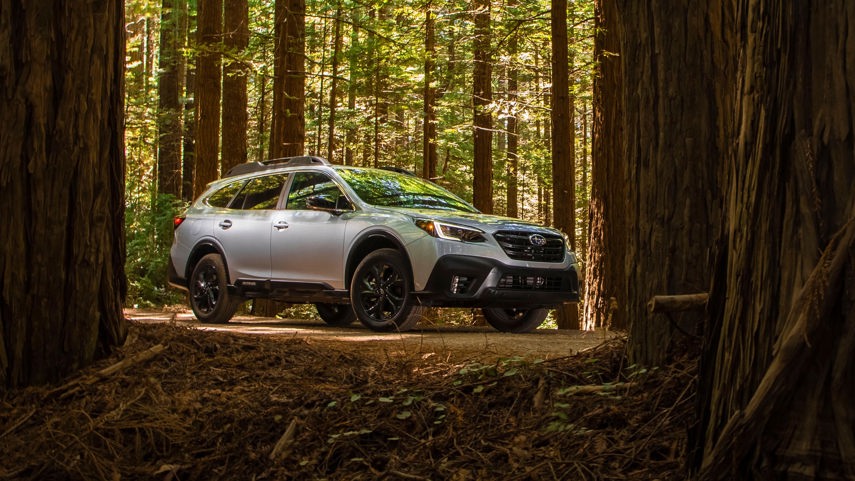
To say that Subaru is an important player in today’s crossover marketplace is an understatement. In fact, you could argue that the original Outback of the mid-1990s created the crossover crush that now dominates the auto industry, a legacy that led AutoTrader to name the mid-size Outback the best two-row crossover in this year’s awards.
The Outback’s straightforward styling is a holdover from the days when Subaru still offered its Legacy family car as a station wagon; no other mid-size crossover is as honest about its car-based roots as this one.
In the Outback’s $30,695 base model, a 182-hp four-cylinder engine provides modest performance, but you can get a more engaging drive by optioning up to a turbocharged engine with 260 hp. If you want to maximize the Outback’s ability to reach remote places, choose the Outdoor trim for its extra ground clearance and more advanced AWD system. No matter which trim you choose, you’ll enjoy a smooth ride in a roomy, well-appointed interior that you can option with a 11.6-inch touchscreen. Another selling point is Subaru’s well-executed EyeSight safety assist suite.
Mazda CX-5
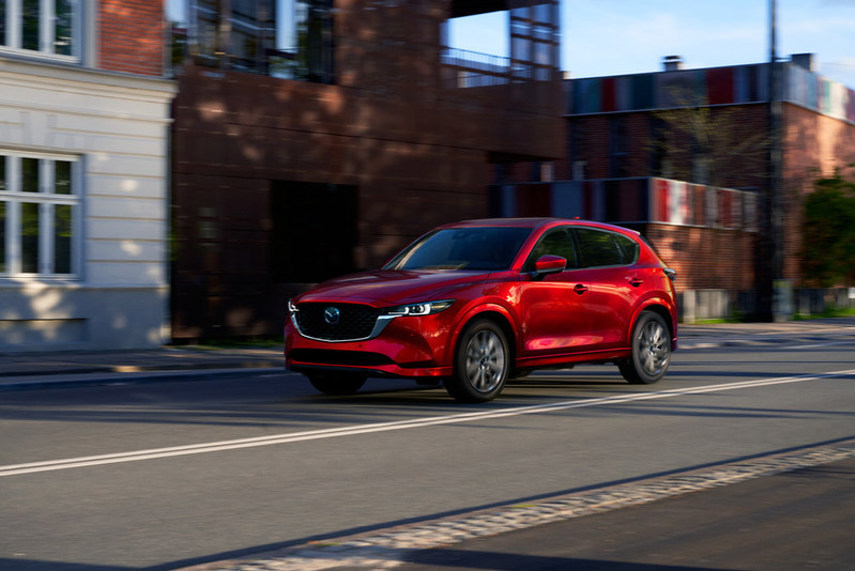
For the second straight year, the compact Mazda CX-5 is the runner-up in the two-row crossover category of the AutoTrader Awards. A couple factors contributed to the CX-5’s return as a finalist: Mazda has updated the 2022 version’s styling, and AWD is now standard across the line, while most of its competitors still start out as front-drivers.
The inclusion of AWD in the full lineup boosts the CX-5’s price to just over $30,000 in GX trim (most other compact SUVs start in the $28,000 to $29,000 range) while the top Signature trim is a $43,000-plus proposition. If the CX-5 is pricier than many of its competitors, its sharp driving feel and high-quality design and materials make it feel like it’s worth the prices Mazda is asking. For example, the Signature package includes real wood interior trim, Nappa leather, adaptive headlights, ventilated front seats, and a head-up display.
Most CX-5 trims use a 2.5L engine (187 hp), while a 250-hp turbo version is optional in GT and standard in Signature trim.
Toyota RAV4
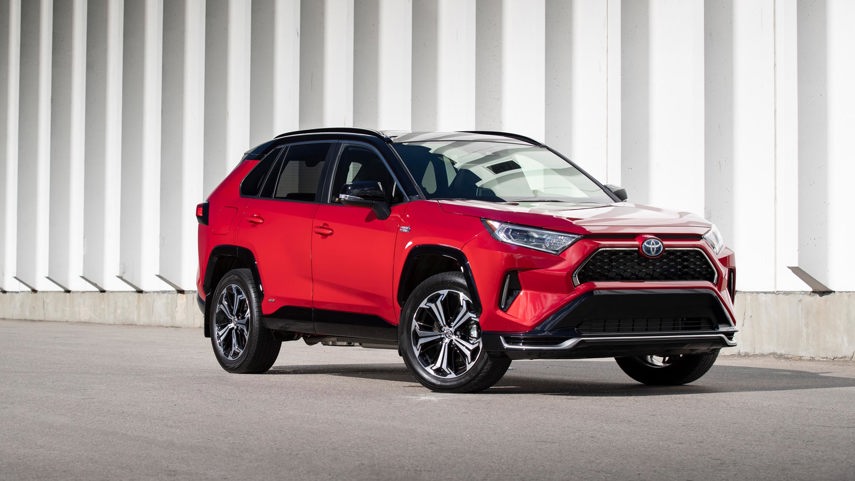
The 2022 Toyota RAV4 also returns as a two-row SUV finalist, but what does Toyota have left to prove? The RAV4 is one of Canada’s most popular vehicles for its roomy, user-friendly interior and a wide range of powertrain options, including conventional and plug-in hybrid setups, each of which promise both better fuel economy and performance than the base gas-only model and helped the RAV4 earn this year’s Best Green Vehicle under $50,000 prize.
Impressively, the plug-in RAV Prime’s $45,000 base price is only a few hundred bucks more than the top conventional hybrid model, making PHEV tech accessible to shoppers in the compact crossover class. RAV4 pricing starts at less than $29,000, which includes a generous suite of safety tech.
Ford Mustang Mach-E
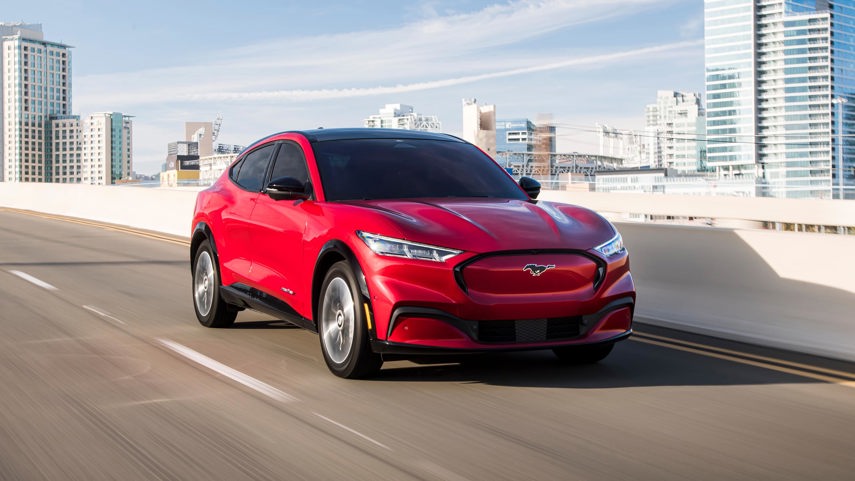
Significantly, the Ford Mustang Mach-E is the only pure electric vehicle that made the finals in voting for the 2022 AutoTrader Awards in this segment. The Mach-E – which also won the Best Green Vehicle Over $50,000 prize – is a well-executed EV that has a lot going for it.
Ford has done a great job grafting the Mustang sports car’s styling cues onto the Mach-E, especially its distinctive three-element tail lights. And despite the Mach-E’s rakish shape, there’s useful space for four and some cargo, including a front trunk.
Driving range is the all-important metric for many drivers shopping for an EV, and the base Mach-E Select ($51,495) reassures with a base estimate of 370 km, which swells to more than 500 km with an optional larger battery pack. Performance maxes out with 480 hp and 634 lb-ft of torque in the GT Performance trim level, priced at $85,995.
Ford Bronco Sport
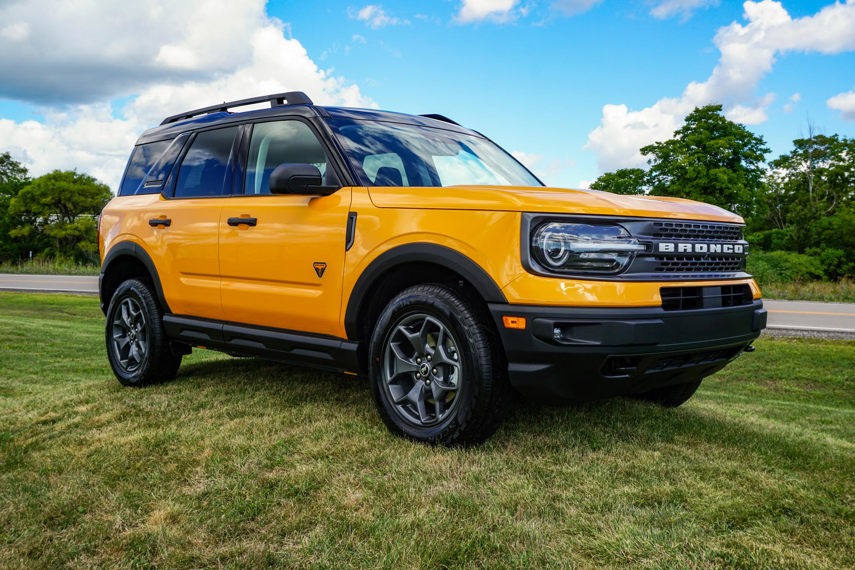
Though it’s based on the popular Ford Escape, the Bronco Sport comes to the compact crossover class with an uncommon level of off-road capability and style for the segment, which is highlighted by trim designations like Big Bend, Outer Banks, and Badlands.
Before you get too excited by those evocative labels, note that entry-level versions derive 181 hp from a turbo three-cylinder engine, with a 250-hp turbo four reserved for Badlands models. The Bronco Sport may be legitimately capable on rough terrain, but it’s no wild powerhouse.
Still, it looks great, and it’s practical and efficient enough for daily use even if you never intend to go off-roading. Priced from $33,999 to $42,999, the Bronco Sport is pricier than its mainstream compact SUV competitors, but you’ll never have to worry about blending into your suburban surroundings.
Best 3-Row SUVs
Kia Telluride
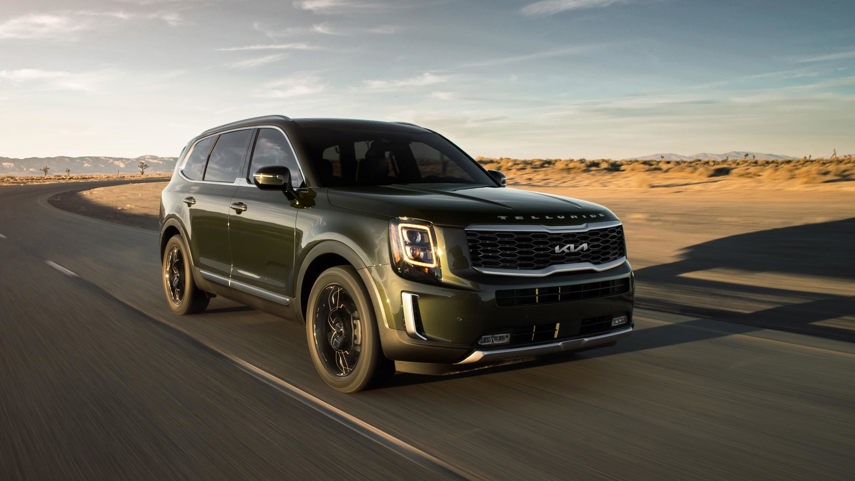
At its 2020 introduction, the Kia Telluride announced that this carmaker was no longer content catering only to mainstream shoppers in the three-row crossover class. The Telluride made that point loud and clear, repeating its 3-Row SUV category win in this year’s AutoTrader Awards.
But despite bold styling that gives off a distinctly upscale vibe, the Telluride is priced for the mainstream three-row crossover segment – albeit at the high end – and comes with lots of standard equipment for the $47,000 entry tag. EX models have passive keyless entry with a hands-free tailgate, a 10.25-inch touchscreen, and three-zone A/C. By the time you get to the $55,695 SX Limited, Kia adds ventilated seats, surround-view cameras, a self-levelling rear suspension, and ventilated second-row seats.
If the Telluride is missing anything it needs to rope in buyers aspiring to a premium experience, it’s power: The only engine on offer is a 291-hp V6, which is strictly adequate for the class. Taken as a whole, however, the Telluride is worthy of our votes – and your dollars.
Hyundai Palisade
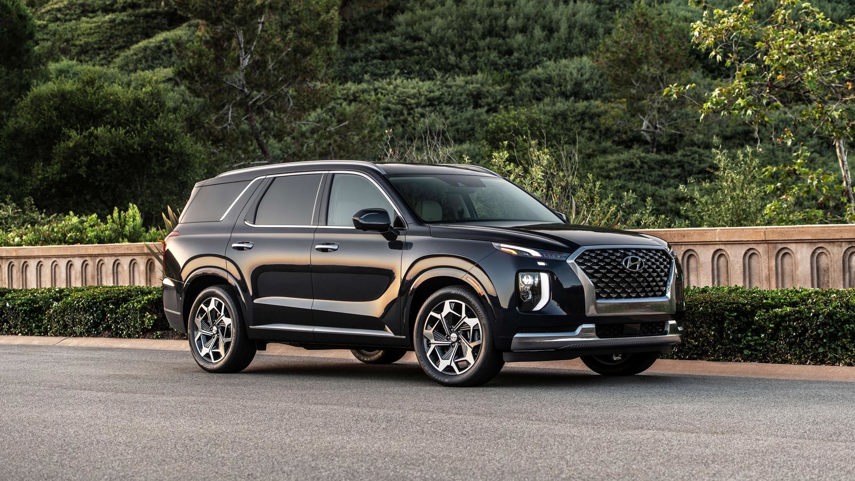
For almost every Kia model, there’s a Hyundai analog, and in the case of the Telluride, that Hyundai is the Palisade.
It didn’t surprise us that the Telluride and Palisade finished first and second in this category for the second year in a row. Hyundai options the Palisade differently to allow for a lower starting price of $41,499, but it costs more to equip a Palisade to match the base Telluride.
The Palisade appears less posh and doesn’t make as memorable a first impression as the Telluride, but if you want a large SUV that is luxurious without being showy, the Palisade’s Ultimate Calligraphy package matches the top Telluride trim for a couple thousand dollars less and offers the same refined driving feel.
Chevrolet Suburban/Tahoe
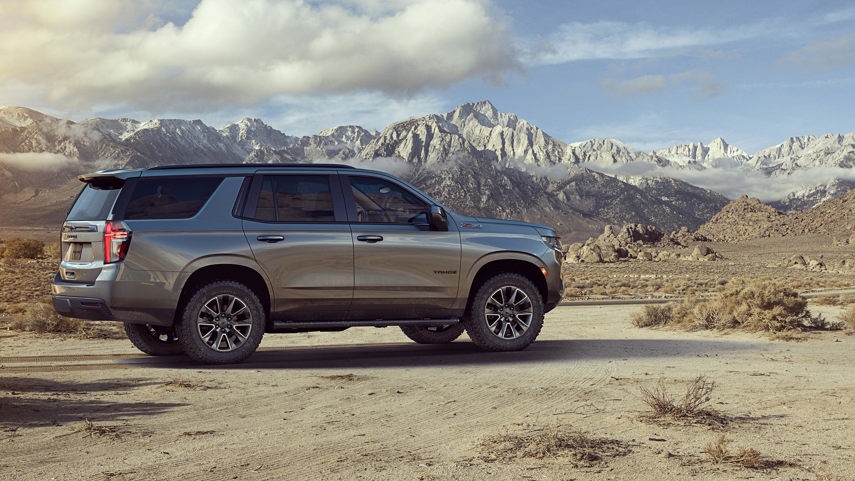
The Chevrolet Suburban and smaller Tahoe are based on the same platform and have been hard workers in this SUV segment for decades. These full-size, truck-based SUVs offer a compelling combination of refinement and capability, including towing capacity passed down from GM’s Silverado and Sierra pickups. The Suburban is our favourite of this pair, as its larger body makes for useful seating in all three rows.
The Tahoe and Suburban also score for offering well-equipped top trims that let you get the luxury you want without the showiness of GM’s Cadillac Escalade.
Standard V8 engines boast great performance, but we’re partial to an optional diesel six-cylinder whose fuel economy rivals that of mid-size crossovers.
Chevrolet Tahoe pricing starts at $56,548, and the Suburban’s price range is $60,000 to nearly $86,000.
Toyota Highlander
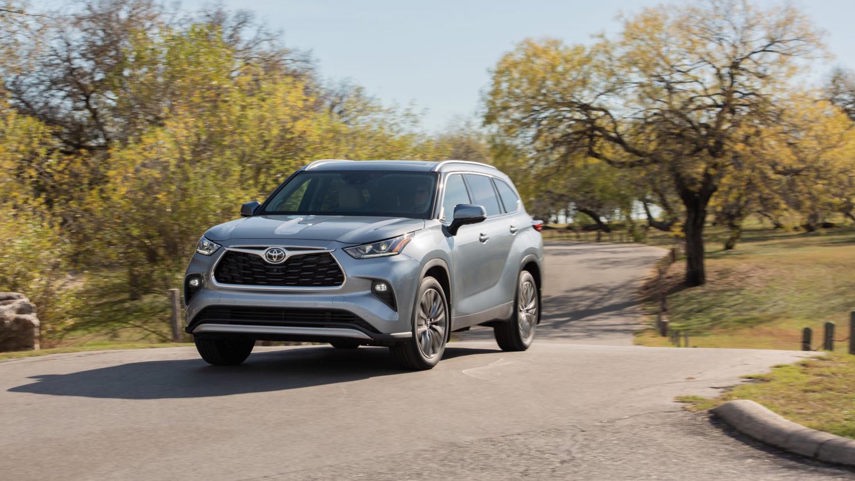
The Toyota Highlander is often a finalist in the AutoTrader Awards because it’s a tried-and-true favourite with its great reputation for reliability on its side. While the Highlander comes standard with three-row seating, Toyota doesn’t intend the tight third row for everyday use; it’s best suited to kids or the occasional adult occupant.
Where the Highlander shines is with its laid-back on-road feel, tuned for families looking for no-nonsense daily transportation. Another plus is a nicely finished interior with lots of places to stash the small items that inevitably come along on every family road trip.
2022 Toyota Highlander pricing starts at $44,750 in LE trim, but for $2,000 more Toyota will switch out a 295-hp gas V6 for a 243-hp hybrid four-cylinder whose city fuel consumption is half that of the six-cylinder. The range tops out at $55,190 for a Highlander Hybrid Limited.
Nissan Pathfinder
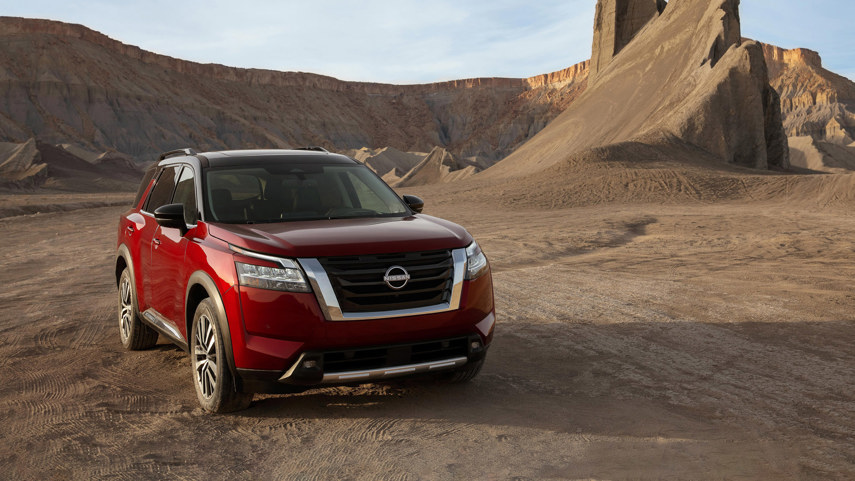
If you want to know how competitive the voting was in this year’s Best 3-Row SUV category, consider that the fifth-place Nissan Pathfinder is all-new for 2022 and yet couldn’t touch the group’s frontrunners in terms of votes garnered.
And it’s not like Nissan phoned in the design of the fifth-generation Pathfinder. As Jil McIntosh wrote in her first drive review, Nissan kept the best things about the old Pathfinder – its 284-hp engine, a solid platform, and useful technology – and fixed what wasn’t great, like the old continuously variable transmission, which is replaced by a new nine-speed. It looks a lot better, too, ditching a dull, decade-old design for tighter, tougher styling. Although the all-new Pathfinder is a big improvement over its predecessor, it didn’t make enough of a leap to keep up with the three-row SUV leaders, but it still has a lot going for it.
The Pathfinder is a thoughtfully designed vehicle that’s worth a look. Nissan’s pricing starts at $44,338 in S trim and tops out at about $55,000 for the Platinum grade.
Best Luxury Subcompact SUVs
Volvo XC40
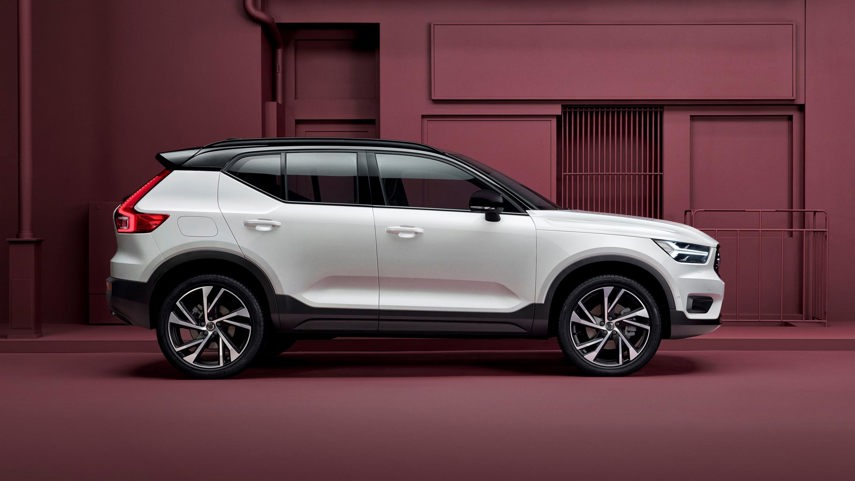
Volvo has built a reputation for making some of the handsomest luxury cars in today’s marketplace, and the XC40 – this year’s repeat winner in the Subcompact Luxury SUV category – is a fantastic example of that.
The XC40 made its market debut in 2019 and has won an AutoTrader Award every year since then – no mean feat in an auto industry where small crossovers are a dime a dozen. The XC40 stands out for its subtlety: Instead of slapping a garish grille on the front end, Volvo uses its “Thor’s Hammer” LED daytime running lights to set its small-SUV offering apart from the crowd. The XC40 is also a lot of fun to drive, thanks to a perky turbo engine and the kind of well-sorted AWD you’d expect from a vehicle born in northern Europe.
Volvo’s entry price of $39,950 for an XC40 T4 Momentum includes a 187-hp engine, digital gauges, and a full suite of driver assists. Atop the range, the T5 Inscription gets a 252-hp engine, a crystal gearshift lever, Nappa/nubuck upholstery, panoramic sunroof, and a hands-free tailgate.
Mercedes-Benz GLA-Class
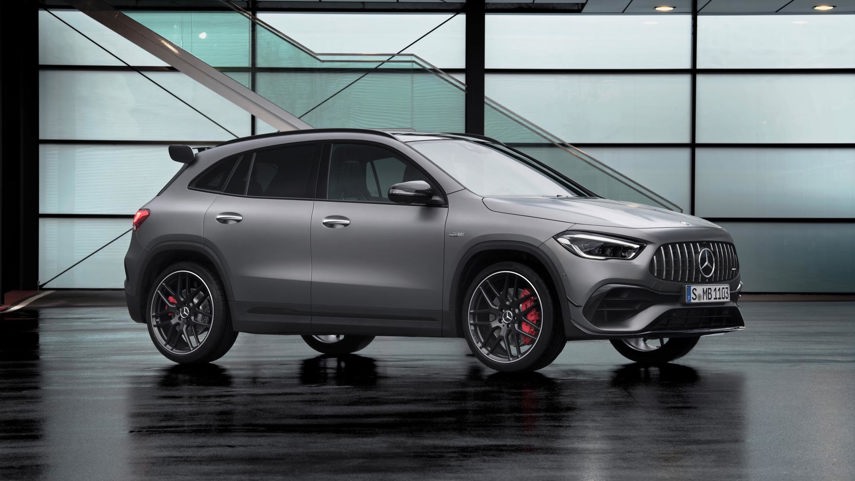
Last year, Mercedes redesigned its smallest crossover model into a second generation – with great success, as evidenced by its repeat appearance as a finalist in this year’s Best Subcompact Luxury SUV category. This time, the GLA improved its standing to second place, up from fourth in the last year’s AutoTrader Awards.
Credit the new GLA’s success to its more conventional design, whose higher roof allows for better interior space, especially in the rear seats. The second-gen’s styling is more cohesive, too, especially inside, where you can option in a wide display screen that houses digital gauges and the MBUX infotainment interface.
The GLA also offers a compelling range of powertrains, all built around a 2.0L turbo four-cylinder engine. The GLA 250 ($43,200) starts with a 221-hp motor, which the AMG GLA 35 bumps up to 302 hp for $53,900. Spend another $10,000 and Benz will put you in the AMG GLA 45, which extracts a formidable 382 hp from that little 2.0L.
BMW X1/X2
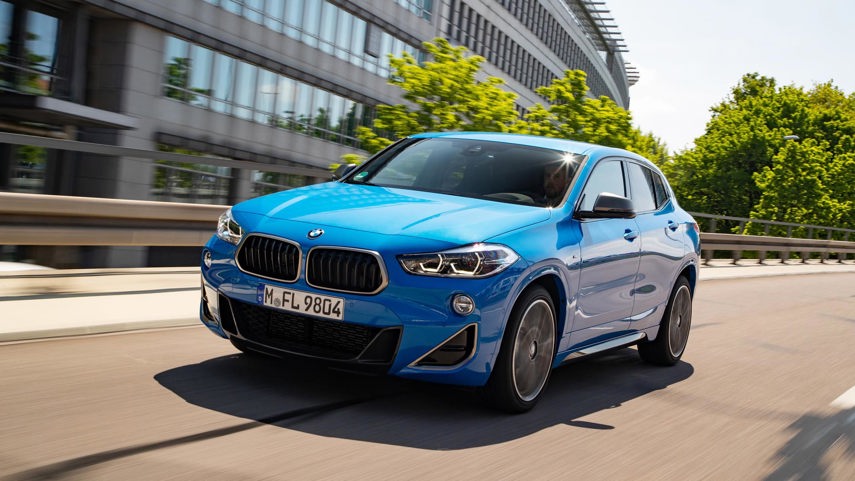
Last year, the BMW X2 placed second in the Best Subcompact Luxury SUV category. This year, the X2 is back with a third-place finish, accompanied by its linemate the X1.
Though marketed as distinct models, we’ve lumped the X1 and X2 together in this year’s voting due to their mechanical and structural similarities. BMW’s decision to split its subcompact crossover offerings into two models is all about offering buyers more choice. The less-expensive X1 is the more sensible of the two – it starts at $42,425 – with a practical interior and 228-hp turbocharged xDrive28i powertrain. The X2 is the sporty sibling, with a cozier cabin and the option of an M35i powertrain making 302 hp and priced at $52,500; a X2 xDrive28i goes for $44,950.
Whether you choose the X1 or X2, you’ll get a small SUV scaled for easy and efficient city driving, but ready for fun if you find yourself all alone on a twisty stretch of two-lane backroad.
Lexus UX
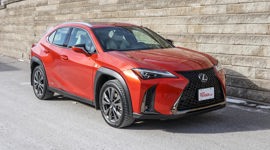
This year, the Lexus UX finished fourth in the voting for Best Subcompact Luxury SUV, replacing the larger – but still subcompact – NX, which placed fifth in this category in 2021. It’s worth noting that the NX is all-new for 2022, but the redesigned model arrived too late to collect significant votes in this year’s awards program.
For 2022, Lexus has trimmed the UX lineup down to a single model powered by a formerly optional 181-hp hybrid powertrain. That was a good move, as the well-sorted hybrid setup was always a better fit in this little vehicle.
The UX’s exterior styling may not be for everyone, but the cabin is nicely done, even if the small rear seat is too snug for regular use. This is a fun little vehicle with sharp handling and a decent ride, traits that are backed up by good fuel economy, especially in city driving.
Lexus prices the UX to start at $40,750, which includes niceties like passive keyless entry, heated/ventilated front seats, a heated steering wheel, and a sunroof.
Audi Q3
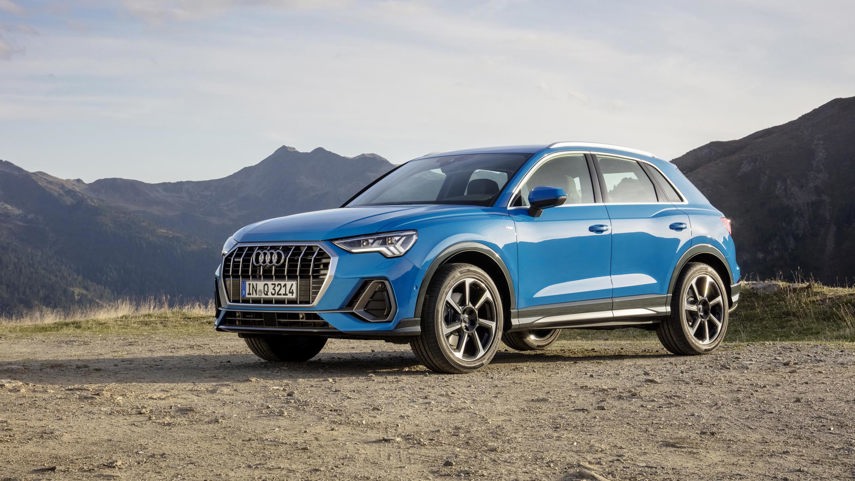
It can be challenging for a luxury carmaker to scale its most recognizable styling cues for use on subcompact vehicles, a market segment that remains relatively new territory for upscale brands. Audi did a great job with its Q3 crossover, which looked good in its first generation, but is even more attractive since a 2019 redesign whose mid-pack finish in this year’s Best Subcompact Luxury SUV voting is proof of its staying power.
Some of the credit for the Q3’s success might go to Audi’s 2021 decision to add a more-affordable base model with a 184-hp version of the car’s 2.0L engine. Pricier models use a 228-hp setup that was standard in 2020. Audi’s other smart move was this year’s addition of a power tailgate, passive keyless entry, and a heated steering wheel to the standard features list, which makes for strong value in a sub-$39,000 luxury car.
All that the Audi Q3 lacks at the top of its range (where the price is $47,650) is a more-potent powertrain option that would help it keep up with the BMW X2 M35i and Mercedes-AMG GLA 35. But then again, when you look this good standing still, do you really need more speed?
Best Luxury 2-Row/Compact SUVs
Genesis GV70
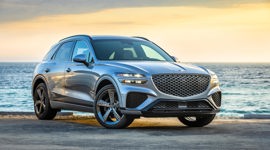
The Genesis GV70, the brand’s first compact crossover model, will be the wake-up call that people who don’t believe in Korean luxury cars need.
The GV70 was the top overall vote-getter in this year’s AutoTrader Awards, garnering more votes than the five other contenders in this group combined and outscoring last year’s category winner – the Porsche Macan – by a factor of five. The GV70 also won this year’s Best Overall SUV prize.
How did the GV70 pull that off? For one, its 300-hp base engine is more powerful than the other finalists’ entry-level powertrains, while the available 375-hp turbo V6 keeps up with desirable vehicles like the Porsche Macan GTS and BMW X3 M40i. But the GV70’s success is about more than power: It also has a nicely tuned chassis, and simply looks and feels more expensive than its $49,500 starting price, especially when optioned with Genesis’s blue, green, or purple leather interior colourways. Sure, a fully loaded GV70 is a $76,000 vehicle, but even that’s a deal next to a fully optioned Macan or BMW X3.
Porsche Macan
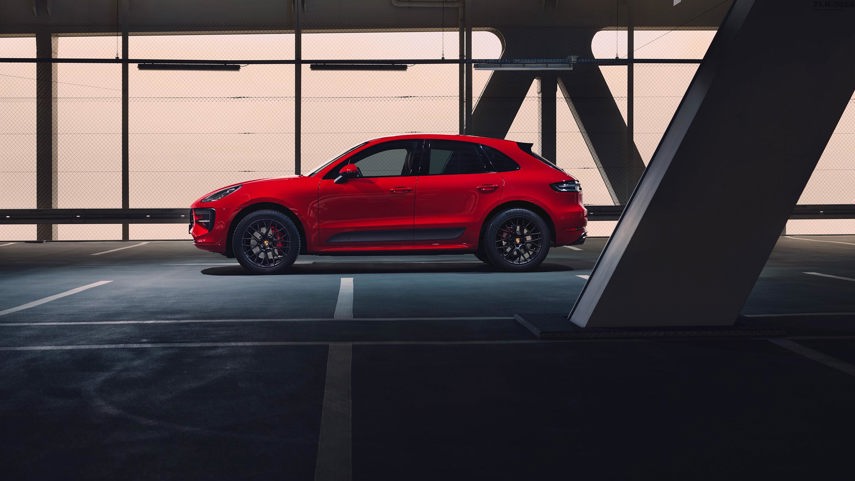
Brand recognition is what the other five finalists in the Best 2-Row Luxury SUV category have in common, and we’d argue no vehicle in this group can boast more of it than the Porsche Macan.
Porsche’s SUV models exert a sort of gravitational pull, attracting shoppers who have long lusted after a Porsche but need more practicality than they’d get in a 911 or Boxster. Sure, the $57,800, entry-level Macan starts with a relatively modest 248 hp, but you still get to say you drive a Porsche.
And for those willing to pay nearly six figures for a small vehicle, the 434-hp Macan Turbo brings track-ready performance, fantastic 18-way adjustable front seats, and a great stereo. Plus, you can bring a few friends along for the ride, which you can’t do in the brand’s sports cars.
Mercedes-Benz GLC
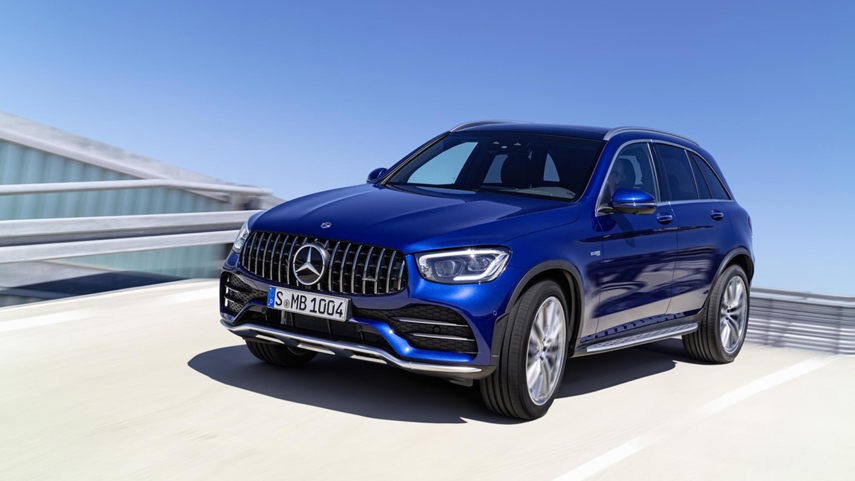
The compact GLC is a core model in Mercedes’ Canadian lineup, where it competes with some of today’s most popular upscale vehicles. The GLC is not as driver-centric as some of its competitors, but it succeeds as an upscale vehicle with a cabin as quiet as it is luxuriously appointed. And it holds its own on the technology front, with options like a large infotainment display and a navigation system that uses augmented reality to help you find your destination.
The GLC is also notable for being voted an AutoTrader Awards finalist in what is expected to be the final year for the current generation model. Benz is reportedly working up a new design for 2023 that should bolster the GLC’s position in the compact luxury SUV space.
For 2022, Benz has trimmed the 503-hp AMG GLC 63 model from the lineup, but there’s still some variety on offer in the $49,900 GLC 300 and the $65,500 AMG GLC 43 and its 385-hp turbo V6. You can also have a GLC in a stylish coupe body style.
Acura RDX
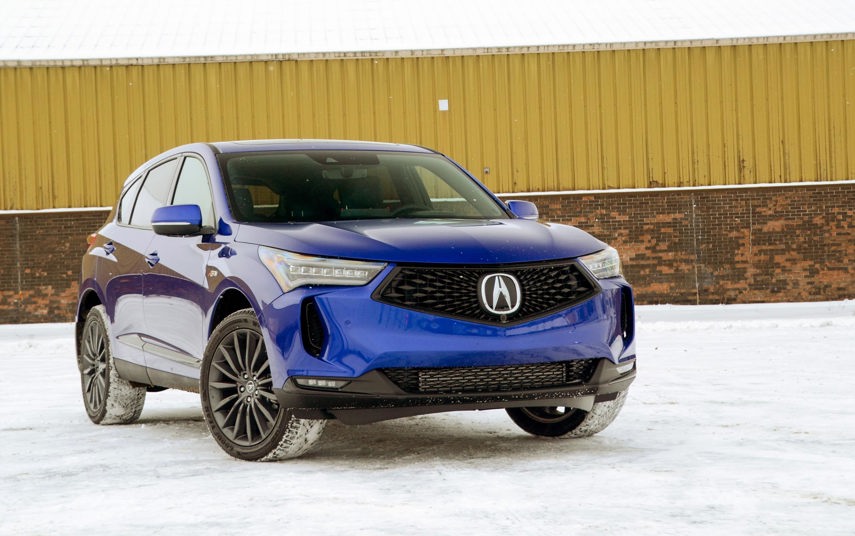
Through three generations, the Acura RDX has become a popular choice in the compact luxury SUV segment, thanks to pricing that’s more in line with some subcompact models. That strong value certainly contributed to its being voted a finalist in the 2-Row Luxury SUV category, but that’s not the whole story.
The RDX is also a lot of fun to drive, with a perky, 272-hp turbocharged engine and a chassis capable of keeping up with Acura’s European rivals. Its 10-speed transmission has two more ratios than most in the RDX’s class, which helps keep the engine in its sweet spot, power-wise.
For its size, the RDX’s cabin is roomy and practical and comes wrapped in styling that looks the part of an upscale vehicle.
This Acura is not without its downsides, though: Its touchpad-based infotainment system is not intuitive, and the transmission can be slow to downshift.
2022 Acura RDX pricing ranges from $45,800 in base form to $58,000 for the Platinum Elite package. There’s also a pricier PMC Edition trim, but limited production numbers make it hard to find.
BMW X3/X4
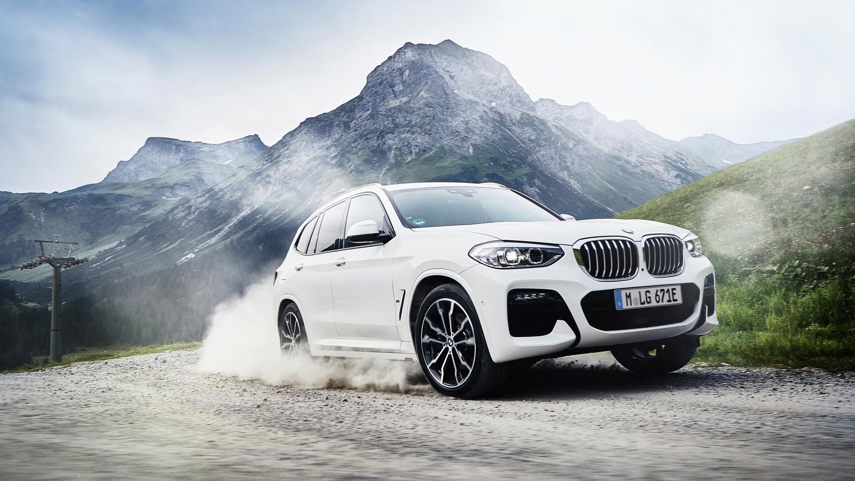
Like the X1 and X2 that placed in the subcompact category, the BMW X3 and X4 are essentially the same vehicle presented with different styling. Both start in a mild xDrive30i trim with a 248-hp turbo four-cylinder engine, which can be optioned to a 382-hp six-cylinder in the M40i. But that’s not all: The X3 adds a plug-in hybrid xDrive30e, and both models come in a range-topping M version with a wild 503-hp engine.
In our opinion, if you’re looking for a compact luxury SUV that is truly entertaining to drive and well-suited to everyday use, an X3 or X4 in M40i trim is tough to beat.
So why didn’t this pair finish higher in our voting? Well, BMW doesn’t exactly give its vehicles away: The X3’s $52,990 starting price is nearly $10,000 more than some of its closest competitors, and while the M models are great performers, their MSRPs are dangerously close to six figures. Value means a lot, even in luxury segments: The Genesis GV70 that topped this category is simply a terrific deal for what you get.
Land Rover Defender 90 / Defender 110
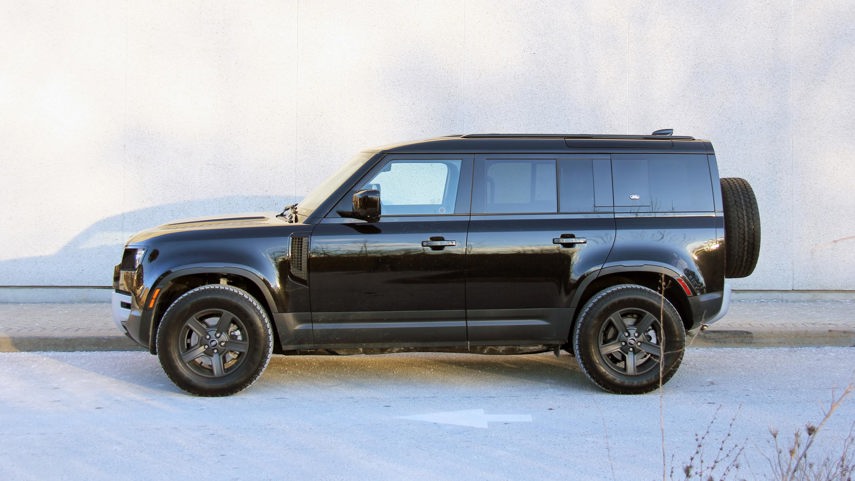
The Land Rover Defender is the British brand’s newest and, thanks to an appearance in the much-delayed James Bond epic No Time to Die, highest-profile model.
Lest you think this SUV is all show with its retro styling and movie-star status, know that the Defender (which comes in two-door 90 and four-door 110 configurations) lives up to the hype. Its off-road cred is bolstered by steep approach and departure angles, good ground clearance, and available all-terrain tires.
Our reviewers appreciated the Defender’s generous headroom and cargo space (particularly in the four-door 110) and high level of refinement that makes it as pleasant to drive on the trail as it is to travel to and from it.
Pricing starts at $64,100 for the Defender 90 and $66,800 for the 110, both of which use a turbocharged, 296-hp four-cylinder engine. By the time you get to the Defender’s 518-hp V8 models, the price nearly doubles to $125,300 and $128,100 for the 90 and 110, respectively.
Best 3-Row Luxury SUVs
Genesis GV80
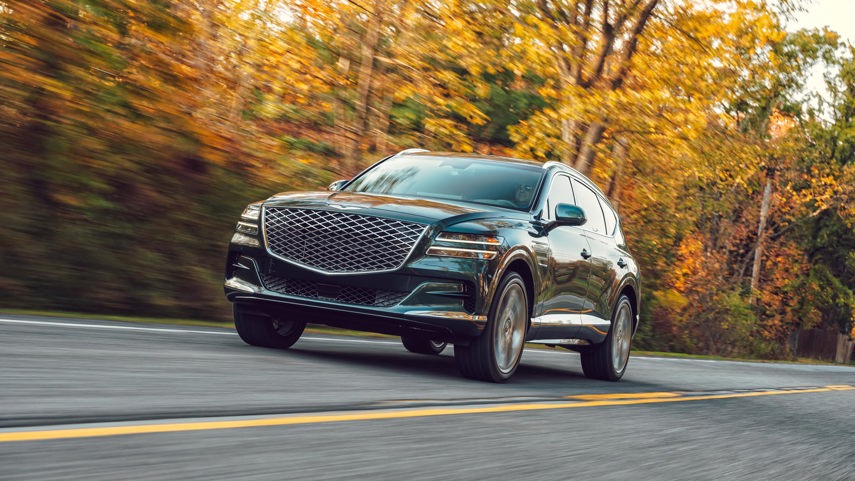
For its second year on the market, the Genesis GV80 follows up its strong 2021 debut by repeating its category win in the Best 3-Row Luxury SUV category.
Genesis knew it couldn’t afford for its first SUV model to be a half-baked effort, so it fitted the GV80 up with a sumptuous high-tech cabin wrapped in distinctive styling.
2022 Genesis GV80 pricing starts at $65,500, which includes a 300-hp engine, a panoramic roof, a hands-free tailgate, self-levelling rear suspension, navigation, and heat for the steering wheel and front and rear seats. At $86,000, the top trim is a luxury crossover bargain with 375 hp, Nappa leather, a 21-speaker stereo, ventilated second-row seats, and 16-way power front seats. You have to try pretty hard to find another mid-size luxury SUV that drives this well and comes with those features for less than $100,000.
Cadillac Escalade
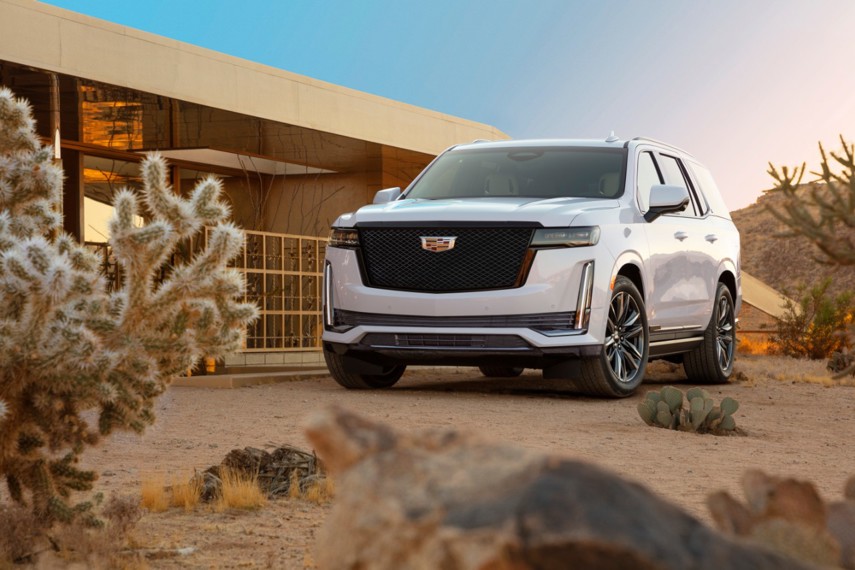
To our eyes, the Cadillac Escalade spent a lot of years looking like any other less-expensive General Motors full-size SUV with a different name on it. That changed last year with the arrival of a fifth-generation design that finally made the Escalade stand out the way a posh vehicle should.
While it still shares structural elements with GM’s big pickup trucks, the Escalade stands apart with a high-tech interior dominated by two organic LED dash displays and fitted with plenty of other fancy features. The cabin is ridiculously comfortable, too, with its broad front seats and a cockpit-like driving position that makes this truck feel smaller than it is from behind the wheel.
The Escalade’s only anachronistic aspect in the context of today’s auto industry is its thirsty 420-hp 6.2L V8. Cadillac’s pricing starts at $90,498, and ranges to $122,798 for the stretched ESV variant.
Mercedes GLS
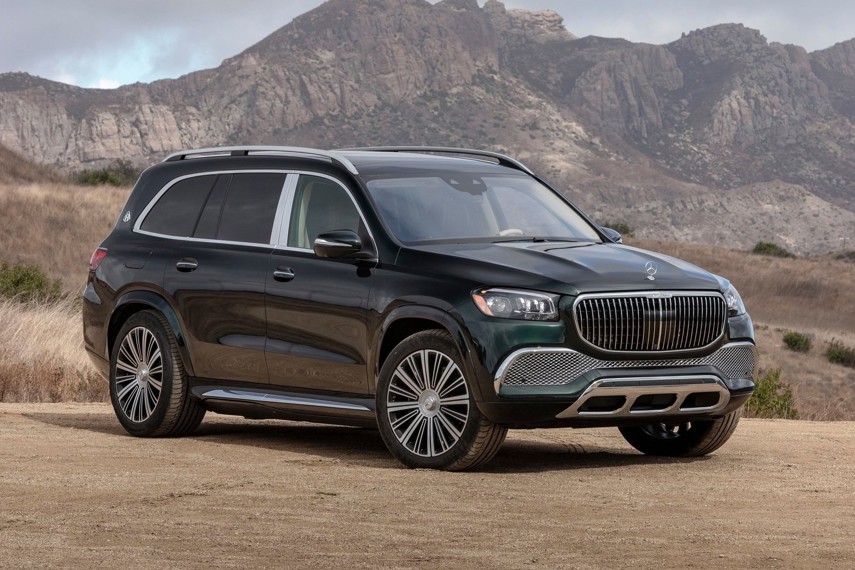
Last year, the Mercedes-Benz GLE was a finalist in the AutoTrader Awards, but this time around the brand’s larger GLS model earned more votes from our jury.
This is about as imposing as a German SUV gets, especially when dressed in a $212,000 Maybach ultra-luxury package. But the GLS doesn’t just look big: It’s also spacious in all three rows of seating, which is not something we can say for every SUV that promises accommodations for six or seven.
Four different powertrains – one six-cylinder and three V8s, with power ranging from 362 hp to 603 hp – all get a mild hybrid assist system that adds torque for better acceleration and provides some fuel consumption relief. Meanwhile, a standard air suspension manages the GLS’s weight to provide a smooth ride and surprisingly agile handling.
And like all modern Mercedes-Benz models, the GLS can be had with loads of high-tech kit, including an artificial intelligence infotainment function that responds to voice commands.
2022 Mercedes-Benz GLS pricing starts at $106,300.
Volvo XC90
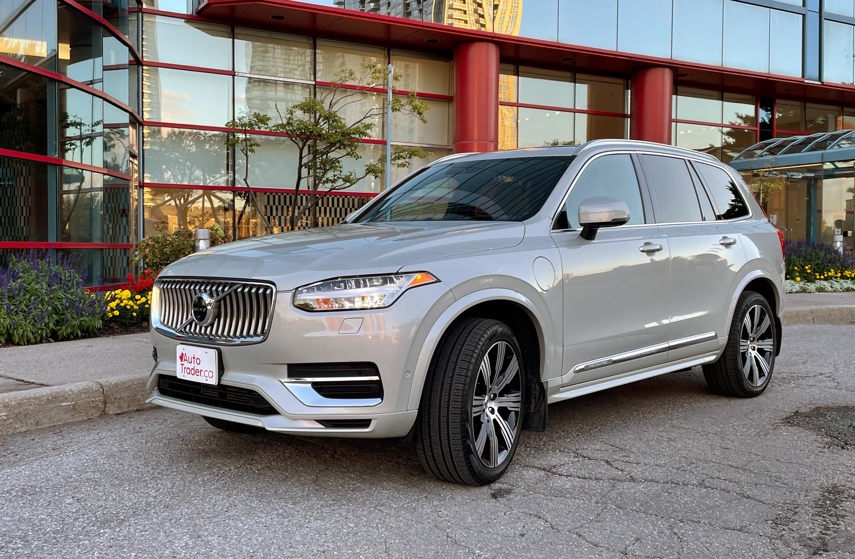
If you’re perusing the Volvo XC90’s spec sheet, you may find it surprising that this mid-size, three-row model’s sole gas engine is a 2.0L four-cylinder. That’s a lot smaller than the six-cylinders that power most vehicles in this class, but Volvo uses a few tricks to help the XC90 keep up.
A combination of turbo- and supercharging helps that 2.0L make upwards of 300 hp in the XC90’s base configuration, the minimum a vehicle in this class needs to be taken seriously today. And for the XC90’s top trims, Volvo goes the hybrid route, using electricity and plug-in tech to generate up to 455 hp and 523 lb-ft in the XC90 T8 Recharge model.
Our expert reviewers like the XC90 for its pleasant, solid driving feel; a posh, comfortable interior that can be dressed up with a shift lever topped with Swedish crystal; and a raft of safety kit that helps this SUV live up to Volvo’s reputation for excellent occupant protection.
The 2022 Volvo XC90 is priced starting at $68,550 for gas-powered versions, while hybrids range from $78,150 to $90,000.
BMW X7
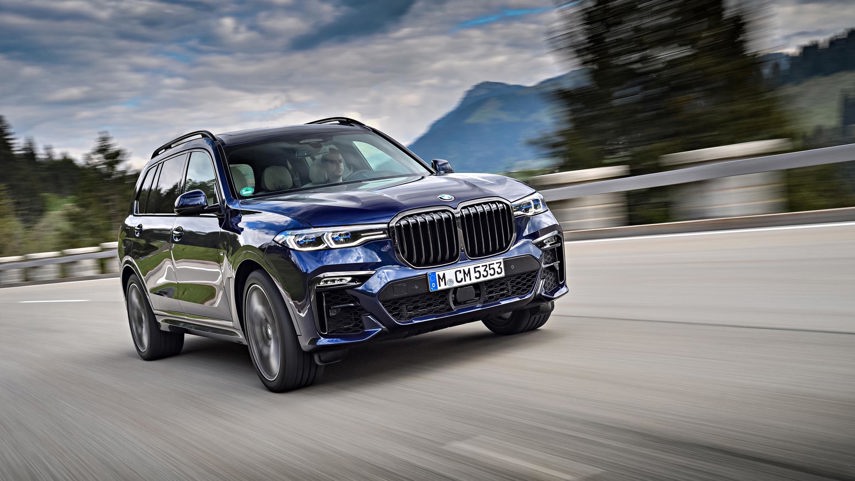
BMW launched the X7 in 2019 as an SUV analog to its venerable 7 Series sedan. It’s the brand’s biggest and poshest utility model and its first with standard three-row seating.
The X7 impresses with styling that masks its size, while an air suspension provides ride comfort and handling that belie its mass. Meanwhile, the cabin can legitimately seat adults in all three rows, and an available five-zone A/C system gives those in the way-back their own climate controls.
One of the X7’s most unique touches is a two-part rear door: The top swings up like a traditional SUV cargo door, while the bottom half is hinged at the bottom like a pickup tailgate. Push a button and the X7’s rear suspension will squat down to provide a lower cargo loading surface.
Pricing starts at $105,000 for an xDrive40i model with a 335-hp turbo six-cylinder engine. At the other end of the range is the Alpina XB7, powered by a 612-hp V8 and priced at $171,000.
Jeep Grand Wagoneer
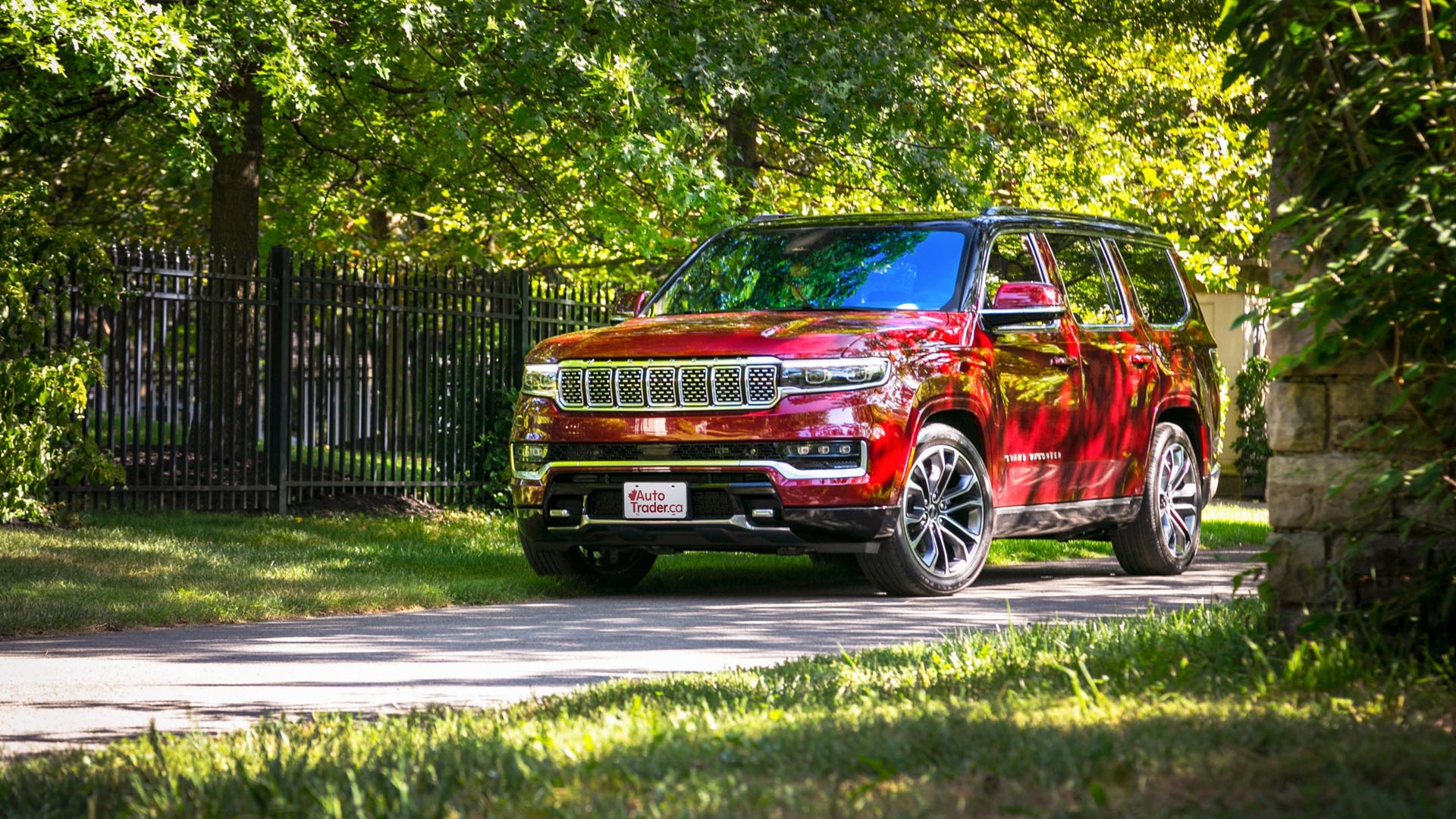
With the Grand Wagoneer, Jeep revives a dormant nameplate in an effort to establish itself as one of the premier makers of luxury three-row SUVs.
To this point, Jeep’s upscale aspirations ended with the Grand Cherokee, so the larger Grand Wagoneer (there’s also a more affordable version simply called Wagoneer) is a big stretch, literally and figuratively.
The Grand Wagoneer’s boxy shape telegraphs its ability to seat people with reasonable comfort in all three rows. But perhaps more pertinent to today’s luxury vehicle marketplace, the Grand Wagoneer is loaded with tech. There are standard screens for the driver’s gauges and centre stack infotainment, and you can option in a front passenger-side display and two more for second-row passengers. Another standout feature is an optional McIntosh stereo whose 23 speakers crank out 1,375 watts of audio power.
Jeep’s largest offering starts at $101,995 with a 471-hp V8, and the price only goes up until you reach the top Series III trim at $121,995.
Lincoln Navigator
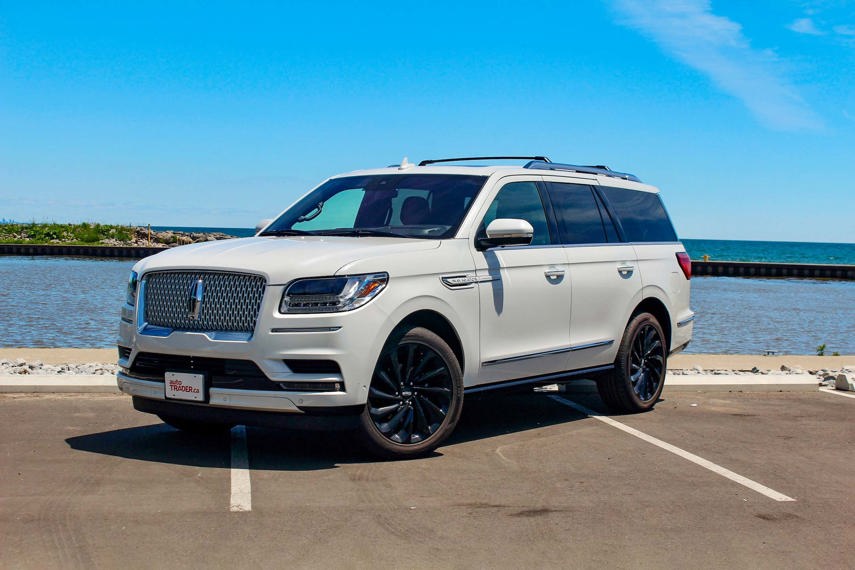
With 440 hp and 510 lb-ft of torque, Lincoln’s turbocharged 3.5L V6 is one of the most powerful engines in this class despite its modest displacement. That torque contributes to a tow rating of more than 3,700 kg, while the engine’s smaller size makes for better fuel economy than many V8-powered competitors.
The Navigator’s other plus is its surprisingly tight turning circle, which aids maneuverability in tight parking lots.
While it’s an excellent large SUV, its styling is a bit dated compared to other large three-row SUVs, especially when parked next to its prime domestic competitor, the newer Cadillac Escalade. The cabins of many other big luxury utilities also look and feel more modern.
Ultimately, while the Navigator is easy to like once you’ve spent some time with it, it doesn’t make as positive a first impression as the other trucks in the luxury full-size group.
Navigator pricing starts at $102,500, and runs to $105,750 for the larger Navigator L configuration.
